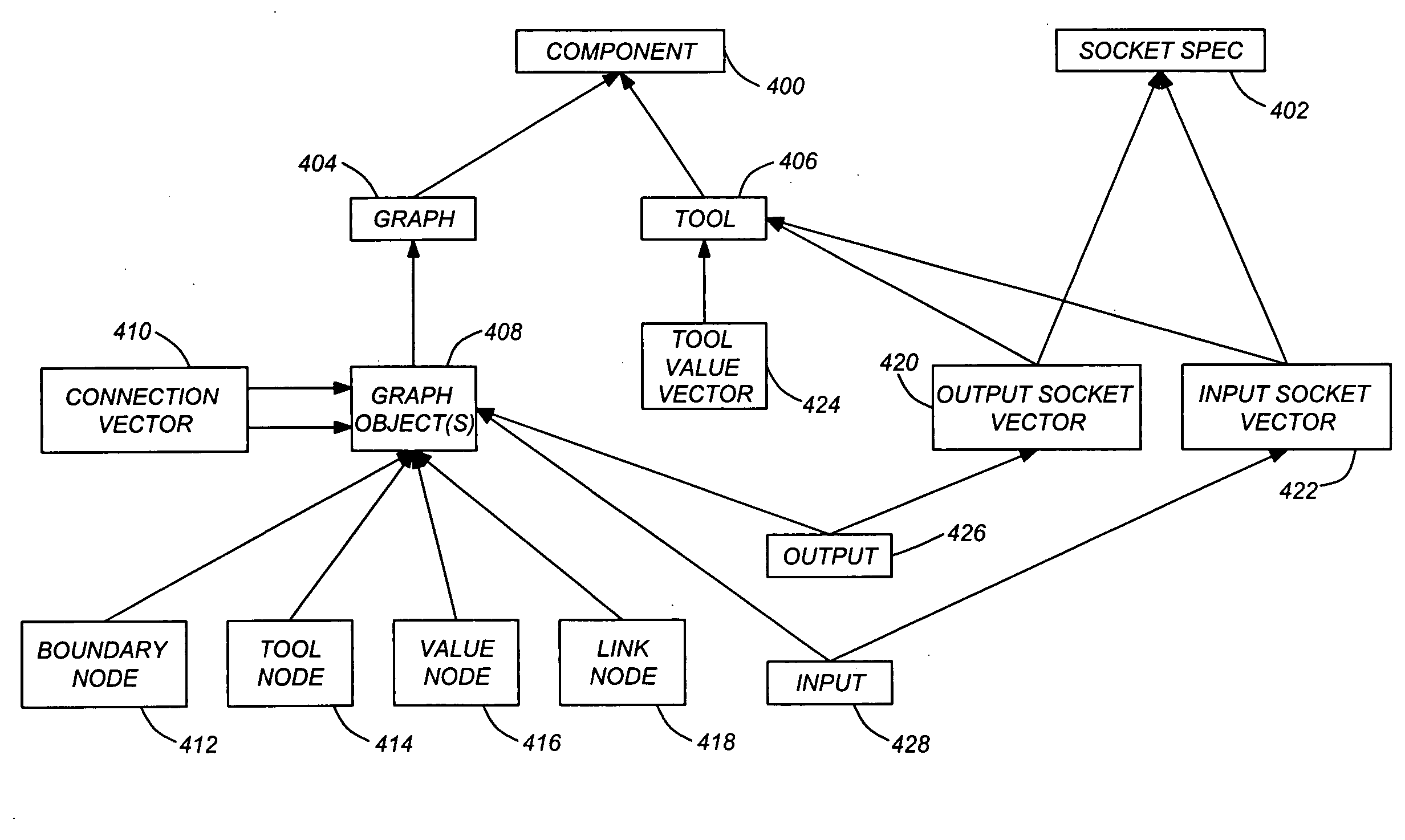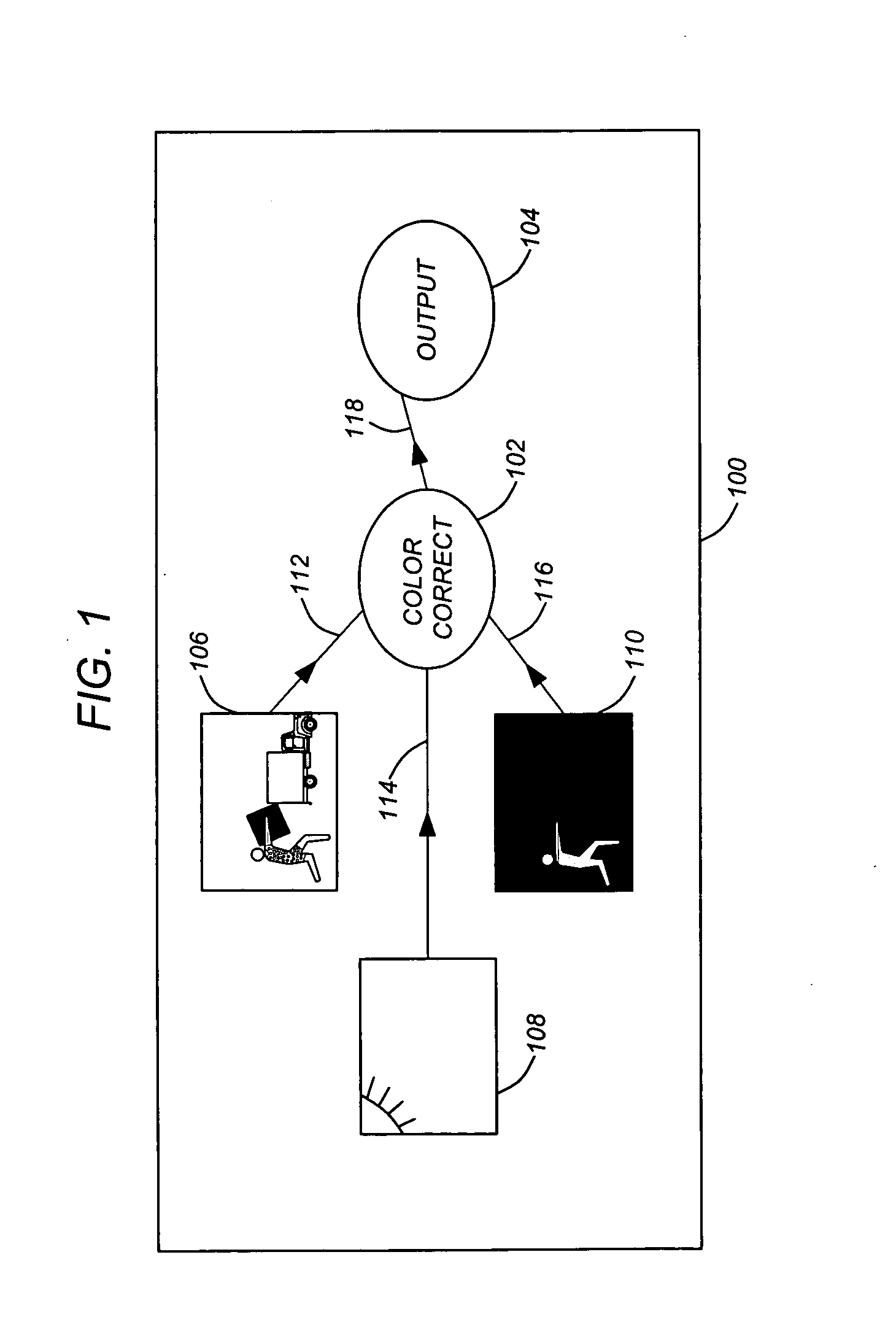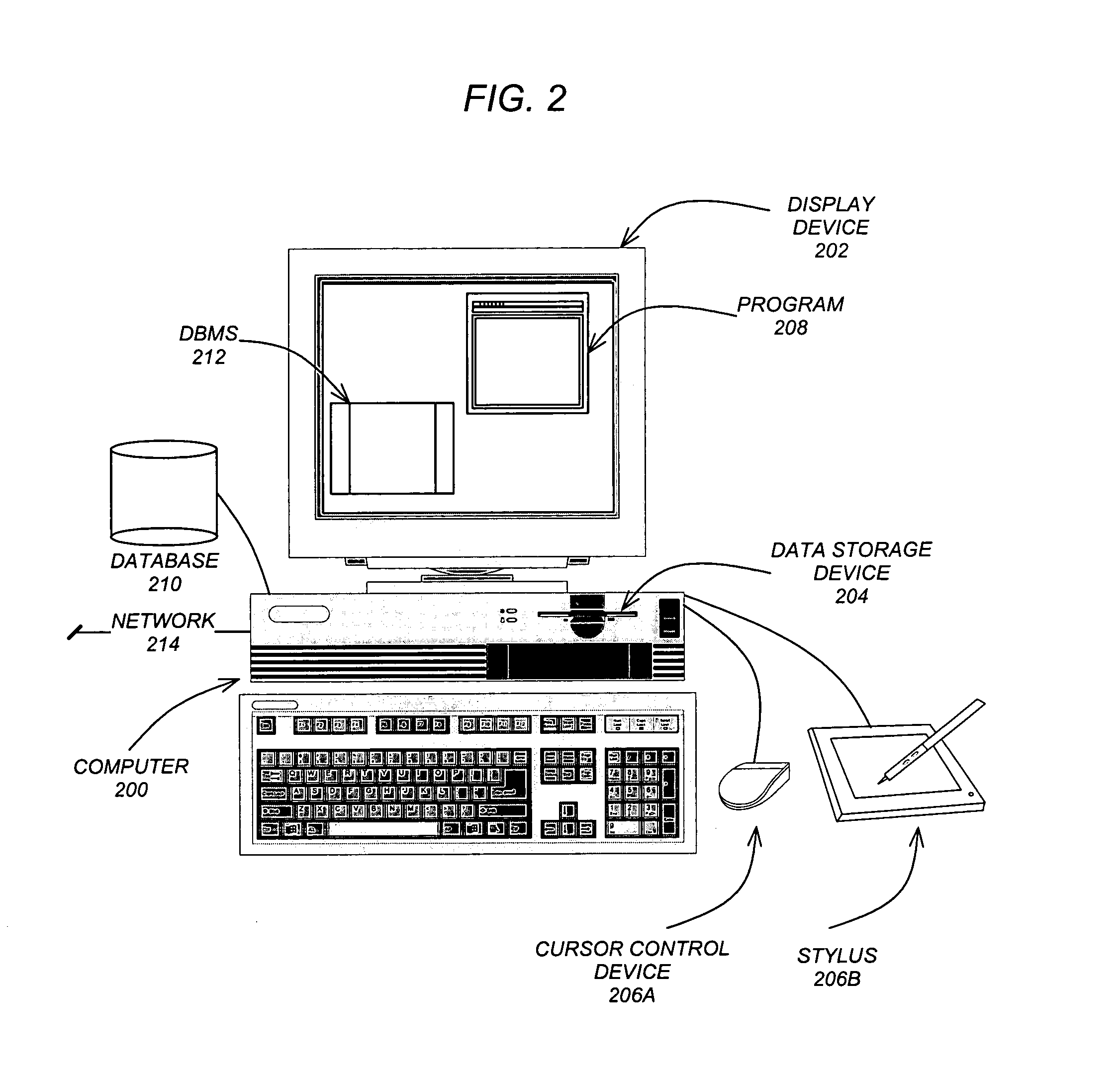However, the prior art fails to provide an efficient and effective mechanism for tracking the progress and state of individual clip elements / operations in a collaborative environment.
Thus, the prior art fails to provide the capability to determine whether an important edit (e.g., one that must be completed before others can take place) is going to be completed when needed.
Post production of sequences for film and video is an extremely complex undertaking.
While the above prior art
schematic view 100 and operations maybe used to modify and edit an image / clip on a single
workstation, the prior art has many limitations.
In particular, prior art
software fails to provide any mechanism that helps manage the process of tracking the progress and state of each clip element across multiple users, allowing a lead artist to easily understand the progress and state-of-completeness of a given sequence.
Accordingly, there is no efficient and useful means (other than
visual inspection) for an art director to know whether an important edit (one that must be completed before others can take place) is going to be completed when needed.
The prior art fails to provide such capabilities.
However, such an approach fails to provide a means to manage multiple clip variations, to generate a variety of usage reports, or to perform any asset management.
In addition to the above, the use of a dependency graph in a collaborative environment has many problems.
For instance, the prior art fails to provide a methodology or
system to perform
collaboration through the use of a dependency graph.
Most prior art applications do not prevent other applications from opening the same file.
Nonetheless, while some applications may have a built-in
file sharing capability, the capabilities are very limited and most prior art applications have no mechanism for preventing multiple users from accessing the same file.
Further, the information within the single file is difficult if not impossible to leverage.
For example, detailed information such as the effect, degraining,
color correction, etc. being performed are not available or accessible outside of the application itself.
However, similar to the file-based model, the application-based model is not intended for use in a collaborative environment.
Thus, there is no mechanism for many people or instances of the application to access or write to a single hidden file /
data structure.
However, the prior art fails to provide any ability to utilize / access the information contained within multiple instances of the hidden files.
However, the prior art would not permit the user to see the end balance for every user of the
system (or for the
multiple applications).
Thus, the prior art fails to provide any
application specific data knowledge outside of the application itself.
Similarly, the specific effects created by artists in a collaborative scene are not available or accessible in a
single application.
In view of the above, prior art applications fail to provide detailed creative / non-creative based information generated by / during use of the application once an application has completed execution.
However, if the naming convention or the actual name of the file is changed by a user, the information is lost or not easily determinable.
If the wrong version / building is loaded, the result could be costly (e.g., based on the re-rendering of the multiple frames that include the building).
However, as described above, such a naming convention would not provide sufficient information and individual artists could change the name and the manager may not be aware of the change.
Thus, prior art facilities have no mechanism for determining / maintaining organization / knowledge of the desired information for a particular shot, sequence, project, or movie.
The city / building example above also illustrates the failure of the prior art to consider that dependencies may frequently change (especially in a collaborative environment).
However, as the information and data changes, the prior art fails to update the references.
Thus, while data is maintained for a particular snapshot in time, such a snapshot may not be updated nor accurately reflect information.
Accordingly, there is no mechanism for maintaining knowledge of the state of every
single element or work in a collaborative environment.
Further,
color correction, setup information, information relevant to the creative aspects of the application, cross-dependencies (e.g., on a project basis), and other information are not available nor exposed in the prior art.
The failure to maintain accurate information and the inability to expand in a collaborative environment also present multiple additional issues.
However, without
error checking and the ability to exclude access to certain users (or to maintain a system for reading / writing files), such prior art scripting applications often override work that an artist has performed.
In this regard, the prior art fails to maintain the knowledge of whether a particular artist has a file open or if a certain version is required.
 Login to View More
Login to View More  Login to View More
Login to View More 


